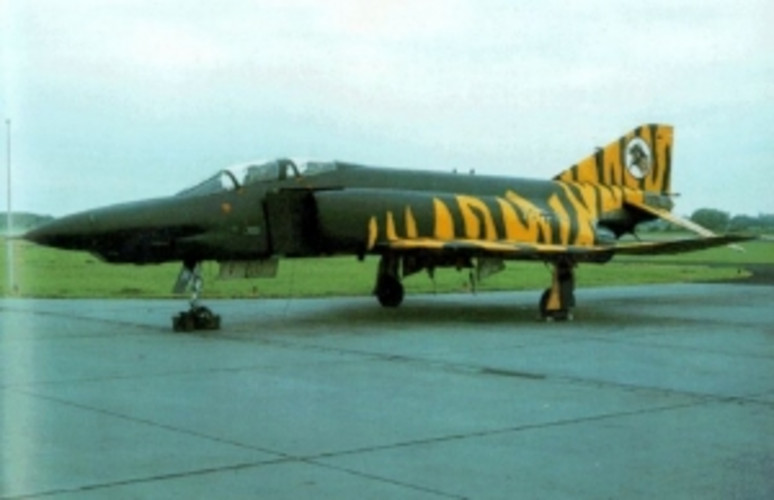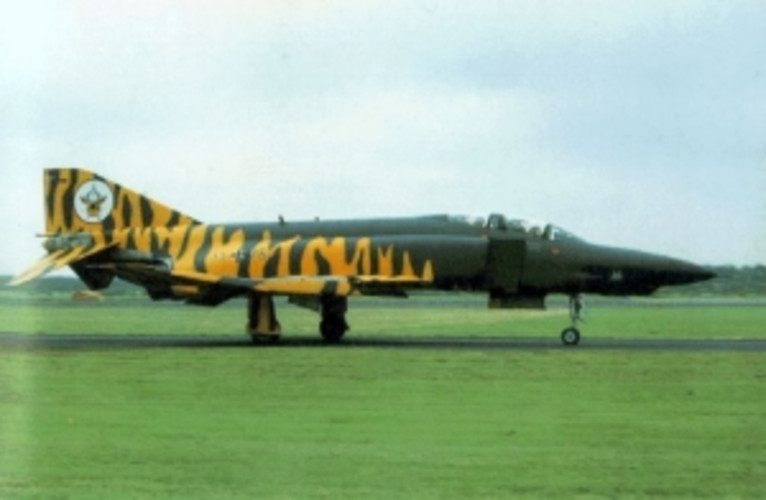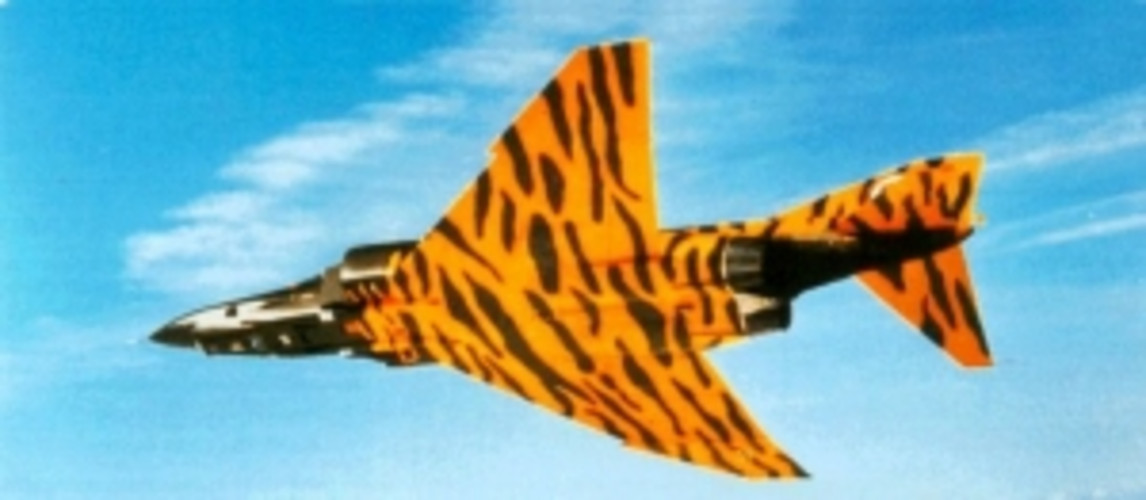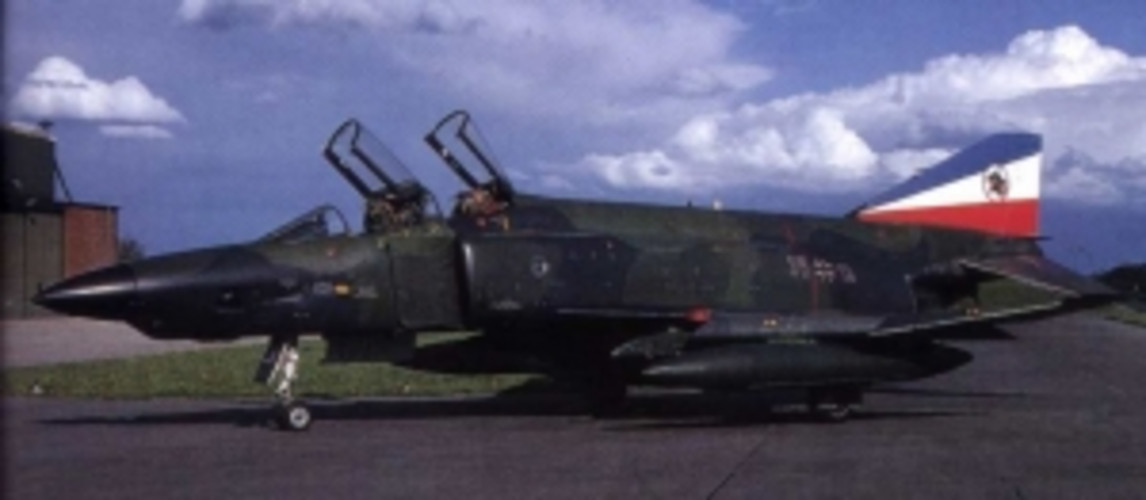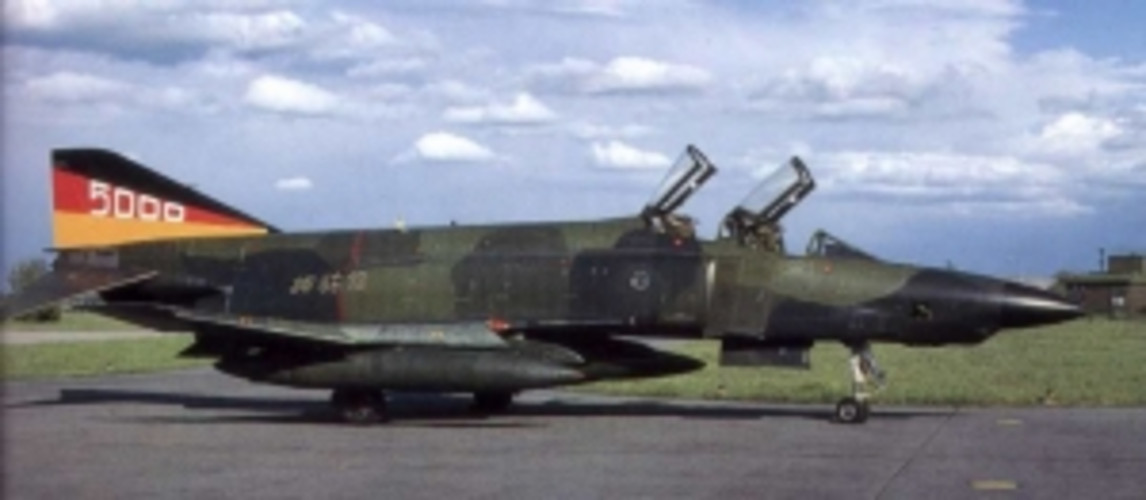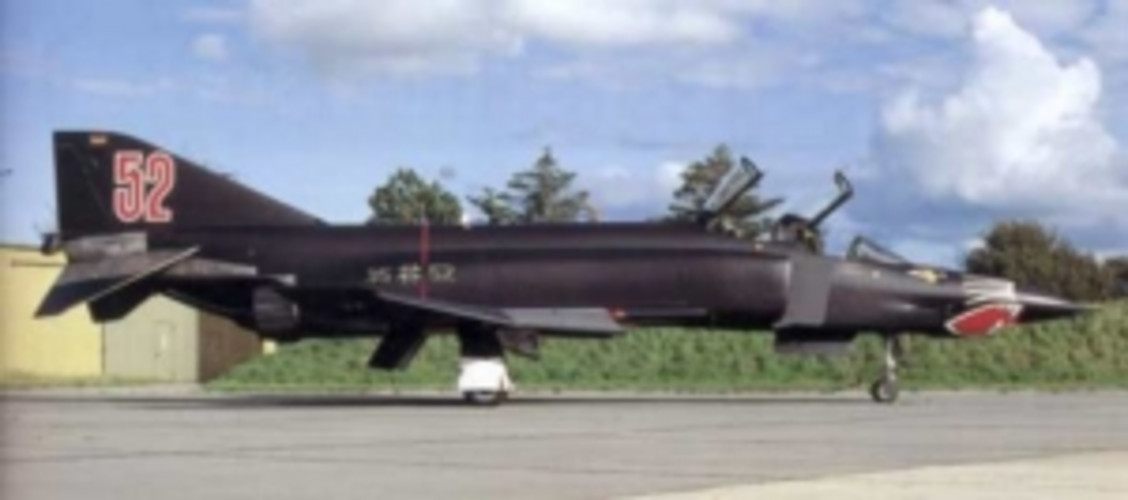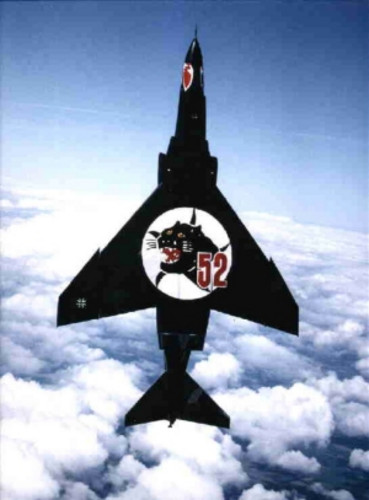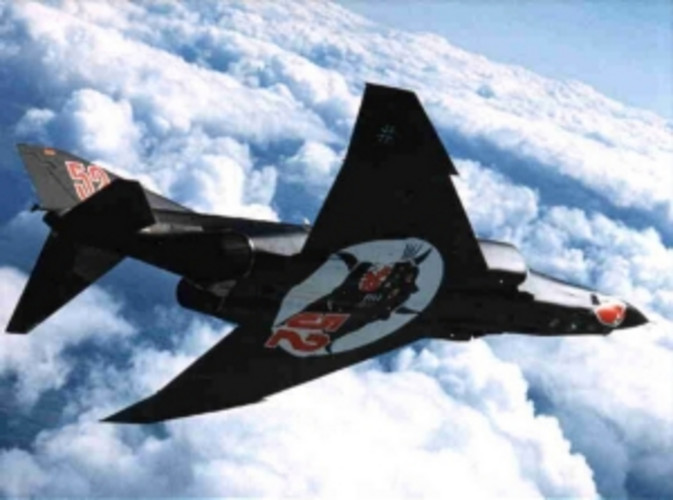RW 52
The root of Recce Wing 52 lies at Erding airbase, where nowadays Munich International Airport is located. On December 12, 1959, the new Recce Wing 52 (AG 52) was officially commissioned by the then Chief of the Airstaff, LtGen Kammhuber. It was equipped with 36 RF-84 Fs, delivered by the USAF. Only one year later the wing was moved almost 1000 km north to Eggebek. From there in 1964 it laterally relocated 30 km west to Leck, which should remain home base of AG 52 for the next almost 30 years. Coinciding with the move to Leck the wing received its first two RF-104 G “Starfighter” aircraft, but the RF-84 F remained in use until 1966. Altogether 29 000 hours were flown on this type and 10 RF-84 F were lost with 3 pilots killed due to accidents.
Shortly after the relocation to Leck, Recce Wing 52 participated in the Tiger Meet 1965 at Bitburg, thus becoming a member of the NATO Tiger Community. Already in 1967 the wing for the first time acted as host for a Tiger Meet. Admission ticket to the club of NATO Tigers was the wing badge with a black panther´s head, which looked through a symbolized camera shutter. The black panther´s badge has as its origin a 700 lbs. bronze panther dating back to the “3rd Reich”, which was discovered guarding an American unit at Erding by pilots of AG 52, and which was subsequently “highjacked” to Eggebek.
During the “Starfighter” era, which lasted only until 1972, altogether 56000 hours were flown with the RF-104 G, and despite a reputation as being accident prone only 3 aircraft were lost with 1 pilot killed. Thus the accident rate was less than one-sixth compared to the RF-84 F.
In 1971 the first RF-4 E Phantoms arrived at Leck, destined to stay there until the disbandment of AG 52 in 1993. The Phantom did not only bring a significant increase in operational capability compared to the RF-104 G; it also meant some sort of culture shock due to being the first two-seat fighter aircraft introduced into the German Air Force. But due to its performance, range and much better reconnaissance equipment compared to the RF-104 G – including a side looking radar (SLAR) with a range of about 120 km – it soon proved to be extremely popular with the aircrews.
Starting in 1980 the RF-4 E was upgraded for the fighter bomber role, for which it was in principle well suited due to its load-carrying capability. Unfortunately, due to the simple optic visor provided, this remained a rather imprecise endeavor.
During the Phantom-era AG 52 hosted Tiger Meetings in 1975 and in 1984, while all in all 185000 hours were flown for the loss of 9 aircraft and 10 aircrew members killed.
“Phantom” Operations
AG 52 operations were defined by the conditions of the Cold War, shortly after the end of which the wing was disbanded. Which means, that the majority of flying was conducted “in place”, within the narrow confines of West Germany and over the Baltic or North Sea. Differing from other wings there were no shift operations, so it was not unusual to fly 3 times a day when night flying was scheduled.
Of course, there were squadron exchanges, cross countries, Tiger Meets and other NATO exercises – the wing participated successfully in “Royal Flush”, “Big Click”, “Recce Air Meet” and “Tactical Fighter Meet” – events, but these were rather exceptions from the rule. The routine yearly deployments to Goose Bay in Canada and Decimomannu on the isle of Sardinia did not start until the early 1980s, but were in general seen favorably by aircrews because they brought change and a different quality from flying at home. They also did a lot to foster comradeship within the wing.
But flying “at home” was not all boring – not with hundreds of jets from 15 German and 11 NATO fighter wings stationed in West Germany and operating in a very confined airspace, resulting routinely in unscheduled air battles involving any mix of different aircraft. Also the SLAR missions at 39000 feet along the Inner-German border or along the Baltic coast were not always routine, as sometimes “shadows” on the other side were following you.
AG 52 differed from other wings of the Luftwaffe because sea reconnaissance was one of its main tasks. This meant frequent flights over the Baltic Sea and wearing the exposure suit called “Frankenstein” quite regularly. Of course, recognizing the differences between Kresta 1 and 2 cruisers or between Petya and Mirka corvettes was an important skill, which was inevitably tested during NATO evaluations.
In contrast to routine sightings of warships of the Warsaw Pact (WP) Nations with access to the Baltic, meeting Warsaw Pact “colleagues” in the air was a rare event. Everybody naturally tried to get a picture of a Russian aircraft, but the superiors were not pleased when a squadron commander returned with nice photos of the new TU-22 bomber, showing nothing but East-German landmass below the aircraft. There also were certain experts who “baited” the WP air defense by flying straight towards the East-German coast at 10000 feet, did a “Split S” shortly before entering the territorial waters, flew away in the opposite direction very low over the water with every electronic device turned off, and waited for the scrambled air defense fighters a safe distance out. This initially proved successful but could only be done in good weather conditions – and the other side adjusted quite fast to the scheme, the radar operator probably drinking his coffee and deciding not to launch the Warsaw Pact QRA against that idiot from AG 52 again.
“Phantom” Squadron life
After the initial years in Bavaria, AG 52 was for the duration of its existence stationed at the most northerly German airbases, first Eggebek and then Leck. The latter was so close to the border, that part of the GCA-Pattern was located over Danish territory. It was also close to the North Sea, which meant lots of rain, frequent low ceilings, high crosswinds and sea fog. Leck was very much what the Americans would describe as “in the boondocks”, with the next really big city – Hamburg – being almost 200 km away to the south, and until the mid-70´s with no “Autobahn” being even reasonably close.
But this had its advantages: Leck with its 6000 inhabitants and the surrounding villages was home to virtually all the unit´s personnel and their families. In summer, the location offered manifold opportunities for water sports – already in the Mid-Seventies a group of windsurfing enthusiasts established itself – but the winters were long and cold. Apart from the not always accident-free nightly sled races from the 47 m high “Rantzau Höhe” there were few opportunities for recreation.
As a consequence, the weekends were often reserved for partying. Unforgotten are parties on Saturdays, which centered on the British comedy “Hallo, Hallo” being broadcasted on Danish TV – thankfully without Danish synchronization. Naturally, both squadrons and the wing had their own traditional events, the most famous being the “Schlachtfest” (translation from the dictionary: social gathering at which meat and sausages from freshly slaughtered pigs are served).
The Schlachtfest dates back to 1966, was for the duration of AG 52 an event of 521 Squadron, and in addition to the English description mostly alcoholic beverages, often with pigs eyes swimming in them, were served. Memories remain of a dreadfully crowded squadron launch, of games involving the consumption of vast amounts of alcohol, of pigs´ blood on fresh snow in January, and of aircraft roaring over the squadron building in desperate attempts to get in despite the weather being below limits.
Also popular was the “Beercall of the North”, a for the time amazingly advanced “joint” event involving Air Force, Navy and Army units, which unfortunately was interrupted for a couple of years after the event of 1980 at Leck produced unacceptable collateral damage.
And then there was the most famous of them all, the NATO Tiger Meet, which was hosted every year by a different unit bearing a cat´s insignia and which contributed a lot to foster relations between the participating units. The international (combined) nature of this event is clearly shown by an incident which happened during the Tiger Meet 1975 in Leck when a British “Gnat” trainer, flown by an American exchange pilot with a German pilot passenger in the rear seat managed to overrun an Italian F-104, damaging its nozzle and as a result losing its own front end.
To put it in a nutshell: Recce Wing 52 was “Joint” and “Combined” already at an early stage and therefore well ahead of its times.
The End
With the Berlin Wall coming down in November 1989 and a rapid decline of Soviet power the disintegration of the Warsaw Pact became inevitable. In a series of negotiations leading to the reunification of Germany in October 1990 and the withdrawal of Soviet troops from German territory, future force limits in Europe were agreed upon.
It was during this time, that military planners - falsely, as it turned out - did not see any future need for tactical reconnaissance. The Luftwaffe announced in April 1991 that it was to disband both Recce Wings. Personnel were dispatched to hand over the RF-4 E´s to Greece and Turkey. On 15 December 1993 the Wing held a last parade and was officially disbanded. The last RF-4 E with tail number 35+25 departed Leck on 12 January 1994.
By then the error in judgement was realized and a new Recce Wing 51 “Immelmann” was built up at Schleswig, not far from Leck. This new wing used the previous Naval Air Wing´s aircraft at Schleswig, it took the designation from the disbanded RF-4 E wing at Bremgarten, and the Panther emblem from AG 52.
Jürgen Erbeck


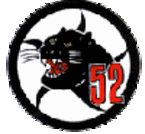
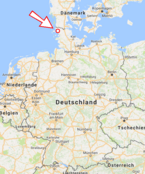
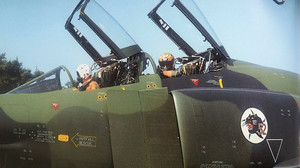
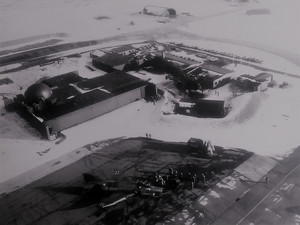
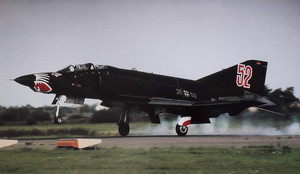
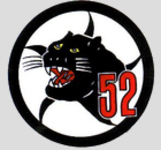
![[Translate to Englisch:] 521](/fileadmin/_processed_/6/9/csm_AG52_1_01ebdbf0b5.gif)
![[Translate to Englisch:] 2./AG52](/fileadmin/_processed_/7/f/csm_AG52_2_a3c3addf22.gif)
